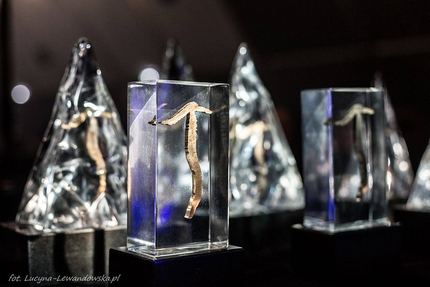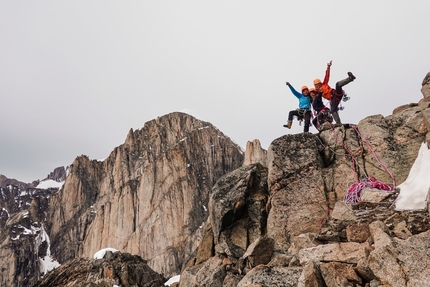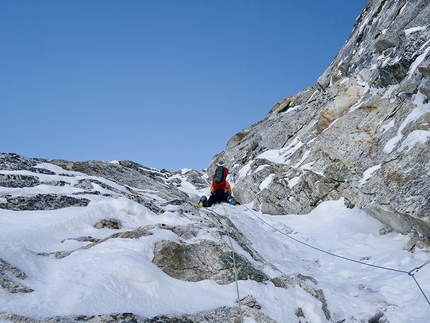Jirishanca, Pumari Chhish East, Jugal Spire win Piolets d'Or 2023, Northern Sun Spire in Greenland receives Special Mention
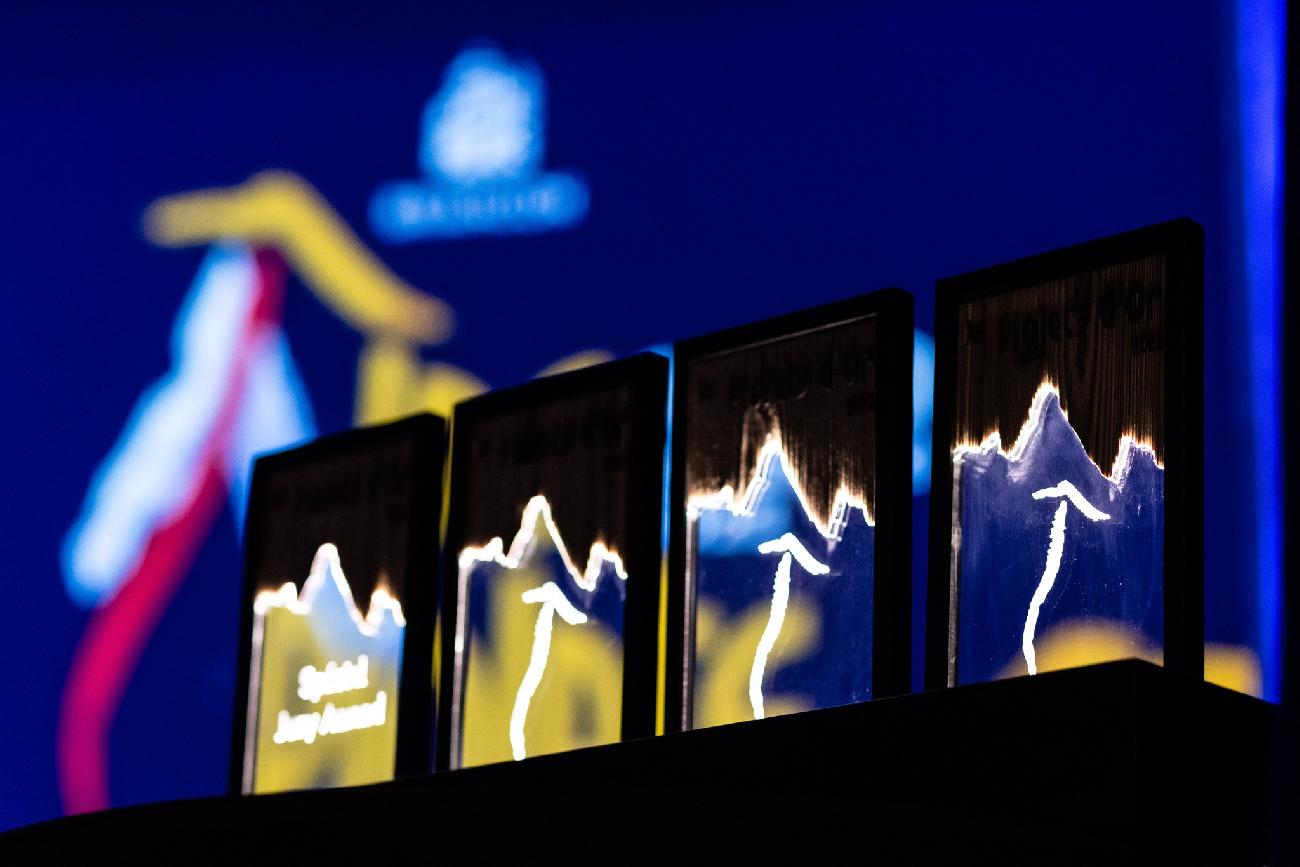
 1 / 36
1 / 36 Piotr Drożdż
Piotr Drożdż
The International Jury of the 2023 Piolets d'Or comprised of Nikita Balabanov, Lise Billon, Aleš Česen, Martin Elias, Genki Narumi, Ines Papert and Jack Tackle has chosen to make three Piolets d'Or Awards and one Special Mention. These are, in no particular order:
Jirishanca (ca 6,094m), south-southeast spur
First ascent of the south-southeast spur of Jirishanca, Cordillera Huayhuash, via Reino Hongo (1,000m, M7 AI5+ 90°) from July 21-23. Descent by the east buttress and lower southeast face
It goes without saying there is real commitment and adventure to be found outside the Himalaya. This year it would be impossible for the Piolets d’Or not to highlight a route from the Andes of South America, where in 2022 several outstanding ascents were completed. The Cordillera Huayhuash is home to very spectacular peaks, including Jirishanca, one of the highest summits in the range and one with no easy route to the top. It was one of the last Peruvian 6,000ers to be climbed.
Canadians Alik Berg and Quentin Roberts chose the coveted line of the south-southeast spur, which rises to a convoluted ridge of enormous snow and ice mushrooms before meeting the vertical, ice-smeared limestone of the south headwall. Past attempts by various parties to reach this headwall by climbing the face further left of the spur had ground to a halt in impossible snow.
Berg and Roberts moved in pure alpine style, carrying sacs on sustained, technical, and previously untouched terrain. Due to heavy snowfall on the rock spur shortly before setting out, and not enough good weather for it to clear properly, the two made the decision to climb five or so pitches up the lower spur and then wrap around the steeper section above onto the south flank. Here, they would climb steep mixed terrain to regain the spur below the convoluted snow/ice ridge shaped like a dragon’s back. They completed this section on day one, the ridge itself on day two, and the crux headwall on day three. The latter provided unprotected pitches that were sometimes as difficult and potentially as dangerous for the second as the leader. When they pulled onto the summit – a rare ascent of the mountain from the east – they were amazed to be greeted by two Americans, who had climbed a route on the right side of the southeast face. Berg and Roberts were subsequently able to follow the American’s descent of the east buttress and lower southeast face, which they achieved with one more bivouac.
The jury felt this to be an inspiring line, direct to the summit, and climbed in exactly the style and with the spirit of adventure that the Piolets d’Or wishes to promote.
Pumari Chhish East (ca 6,850m)
The first ascent of Pumari Chhish East, Hispar Muztagh, via The Crystal Ship (1,600m, 6b A2 M7) on the south face and upper west ridge, from June 25-29. The route was rappelled.
Since 2007, Pumari Chhish East, the lowest and probably the most technically difficult of the Pumari Chhish group, north of the Hispar Glacier, had received five attempts from the south. For the sixth known attempt, Christophe Ogier, Victor Saucède, and Jérôme Sullivan from France opted for the middle-left of the four large rock pillars, a line envisaged in 2009 by three Canadians, who climbed the initial snowfield before retreating due to illness.
The three French climbers chose to go early, making the approach in May with a view to attempting the face in June, when the alpine terrain would still be well-frozen. However, it snowed on 26 days of their 27-day wait at base camp, though during this period they acclimatized by spending a night on nearby Rasool Sar (5,980m). They then received a forecast for a seven-day weather window, and after allowing one day for the face to shrug off recent snow, set off, climbing the initial 700m snowfield at night.
On the 700m pillar above they employed big wall techniques, with the leader hauling while the two seconds jumared. Aid was often used to surmount overhangs or to remove large snow formations plastered onto the cracks, but generally they climbed as free as possible under the conditions. The first three bivouacs were poor, exposed, and uncomfortable, but the fourth day took them through the remaining difficulties, which included two vertical 6b rock pitches at 6,600m (led in rock shoes), to a relatively spacious shoulder. Next day they climbed through the summit mushroom and were on top at 10 a.m. Waiting at their last bivouac until mid-afternoon, when the sun disappeared from the face, the three began rappelling the route, reaching the snowfield at nightfall and advanced base around midnight.
The jury felt this to be an elegant line, a line of strength that was full of uncertainty, on one of Pakistan’s big unsolved problems. It is not the easiest option on the mountain, but the steepness and sustained high level of difficulty made it one of the safest, rising almost directly to the summit. The ascent was very much a collective effort, displaying great team spirit in line with the Piolets d’Or Charter.
Jugal Spire (aka Dorje Lhakpa II, 6,563m)
First ascent of Jugal Spire (6,563m), Jugal Himal, via The Phantom Line (1,300m, ED) on the north face, from April 25-29. Descent was effected by traversing the mountain and descending previously unclimbed ground to the south and west.
The Jugal Himal holds the nearest high mountains to Kathmandu but is infrequently visited. Desperate to climb after being curtailed by COVID-19 for two years, Tim Miller and Paul Ramsden from the UK arrived in Nepal in early spring. During the whole of the expedition it would rain, hail, or snow for at least part of every day.
After a four-day approach to base camp, an acclimatization outing on the west ridge of Dorje Lhakpa allowed them to see for the first time the north face of Peak 6,563m (later named Jugal Spire), a huge sweep of very steep granite. Although seemingly the preserve of big wall climbers, careful inspection showed a steep ice line cutting diagonally through the face from bottom right. While most of this line had a suggestion of ice, there was a rock wall at around one-third height that appeared steep and blank.
After the initial day, which involved sections of unprotected and delicate mixed climbing leading to a comfortable bivouac, they reached the steep rock wall. Surprised, they found a series of chimneys hidden behind a line of flakes that gave intense Scottish-style climbing. The following night spindrift avalanches ripped the tent and part of their time was spent standing in the dark until spindrift eventually subsided. The third night was more pleasant, though by now the tent was no longer usable as such, and the two just hid inside the fabric. The fourth bivouac, close to the top of the strenuous bullet-proof ice of the summit slopes, was inside a natural rock cave. Next day, after 37 pitches from the bottom of the face, they crossed the summit, rappelled from Abalakovs to the south, then dropped west down a broad gully to make their last bivouac where it met the glacier. They named the route The Phantom Line due to the ephemeral nature of the ice, and the way the route appeared and disappeared under different light conditions when viewed from a distance. Ramsden felt it was one of the best routes he’d climbed.
Special Mention 2023
First ascent of the east face of Northern Sun Spire (1,527m)
Renland, East Greenland, by Via Sedna. Top of face reached on August 7 and the route then rappelled.
A Special Mention is given to the women’s sailing and climbing team that made the first ascent of Via Sedna (780m of climbing, 16 pitches, 7b+ A1) on Northern Sun Spire. Starting on June 20 from La Rochelle in France on the 15m yacht Northabout, skipper Marta Guemes (Spain) and crew Caroline Dehais and Alix Jaekkel (both France), and Maria Sol Massera (Argentina), plus climbers Capucine Cotteaux (France), Caro North (Switzerland), and Nadia Royo (Spain), and photographer Ramona Waldner (Austria), spent six weeks negotiating bad weather and difficult pack ice before finally reaching the coast of Renland. Due to these delays, they had only 10 days in which to climb before having to set sail again.
Cotteaux, North and Royo spent two days climbing steep difficult terrain and fixing 300m of rope, the leader sometimes resorting to aid while the followers mostly free climbed. With one-and-a-half days now left before a predicted snowstorm, the three set off up the ropes, added four more difficult pitches, spent the night in portaledges, and the following morning, after a further six pitches of more reasonable 6a-6b, reached the upper south ridge. Natural gear was used throughout. Incoming weather persuaded them not to make the easy scramble to the summit (the top section of the 2019 first ascent route), and by the time they regained the base of the wall it was raining. After four more weeks of sailing, and total travel of 4,000 nautical miles, they were back in France.
Not only was this a fine adventure by a self-contained, international group of women, but also the expedition itself had minimal carbon footprint. It forms a representative example of relatively "low impact" expeditions.
Info: pioletsdor.net



 Copia link
Copia link

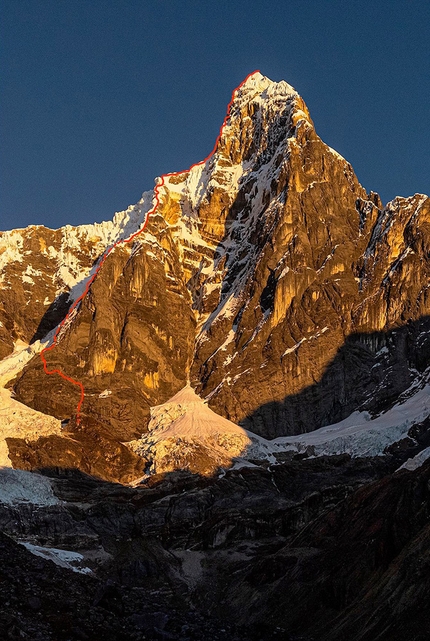
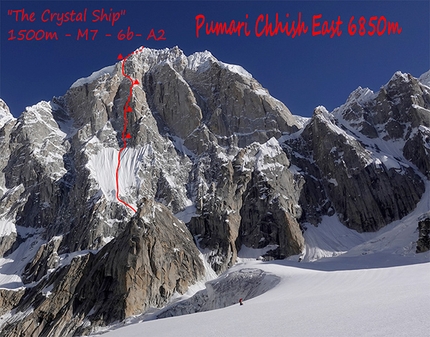
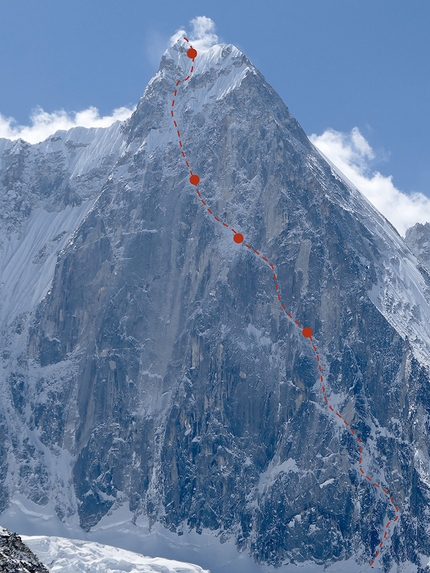
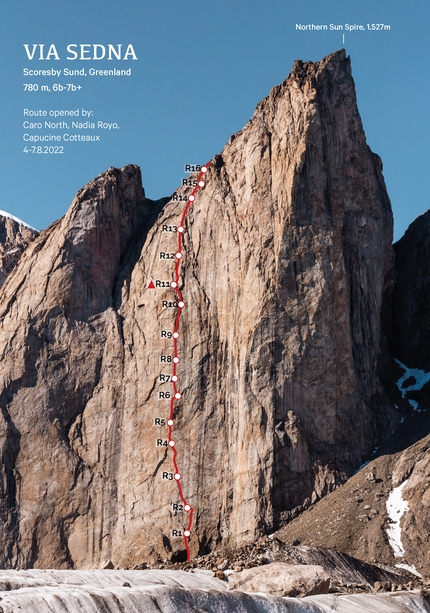
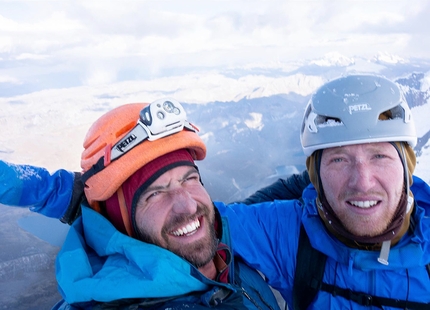
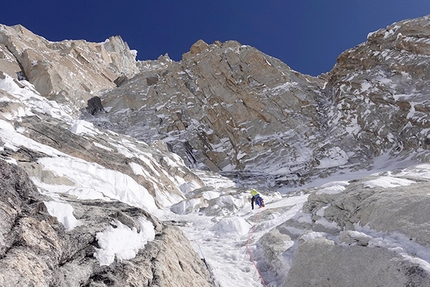
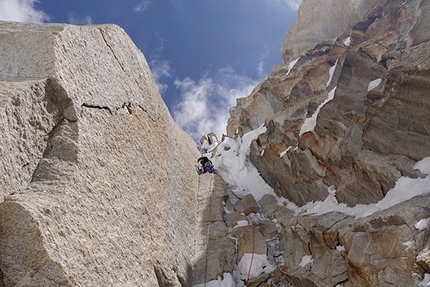
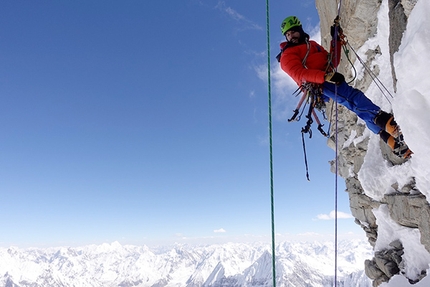
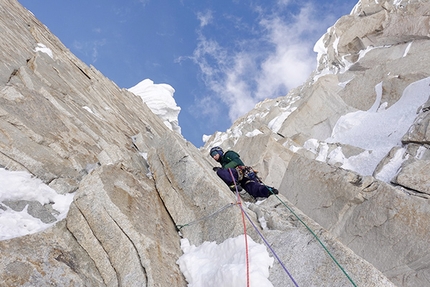
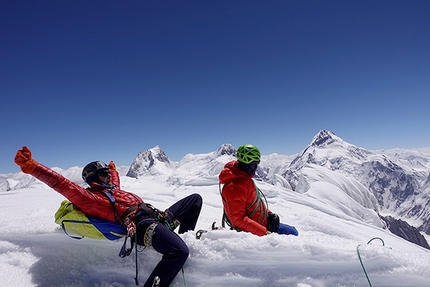
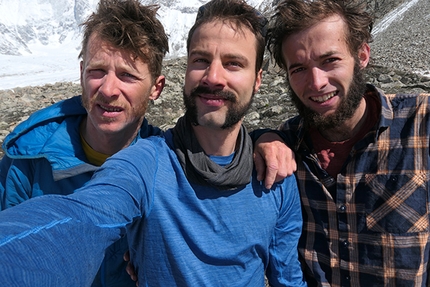
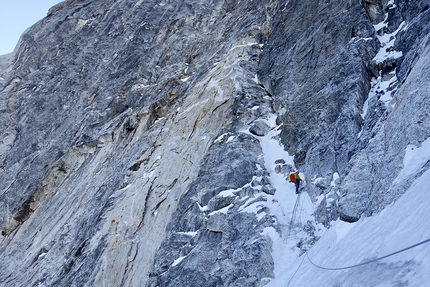
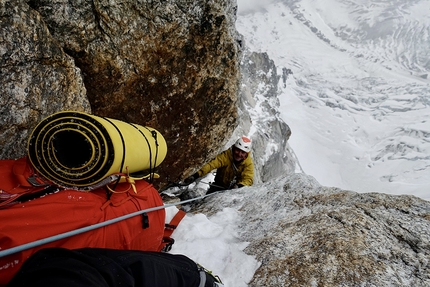
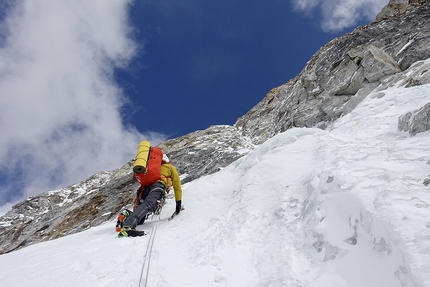
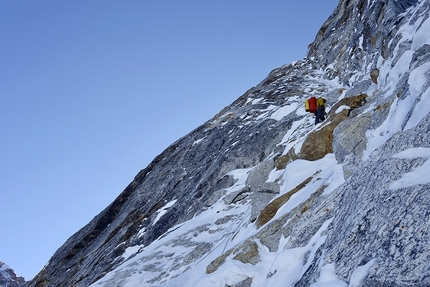
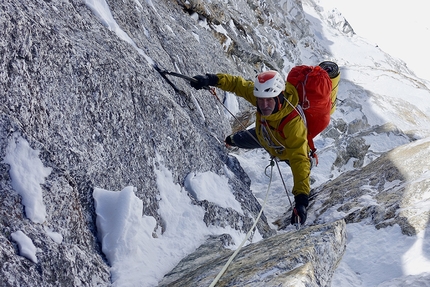
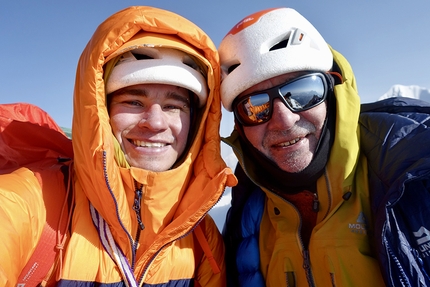
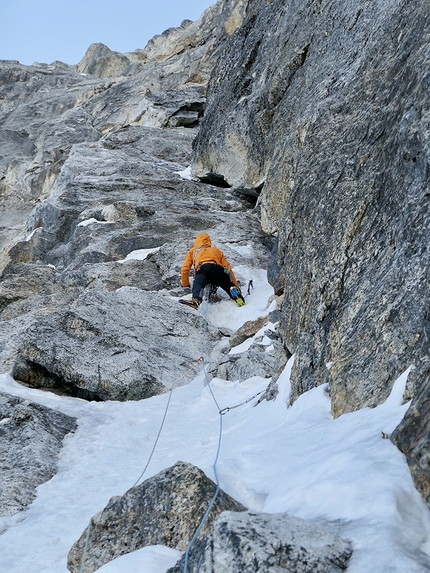
 See all photos
See all photos